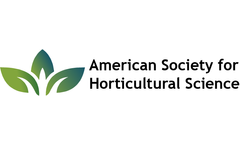Insecticide Application Articles & Analysis: Older
17 news found
Only open the end doors while moving equipment in and out of the house for activities such as litter conditioning or application of insecticides and litter amendments. Once this activity is completed, immediately close the doors. ...
BioSafe Systems has developed an insecticide to kill insects and pests commonly found inside homes, livestock housing and food processing facilities. Aptly named PYClear®, this concentrated product utilizes pyrethrins, a natural insecticide derived from chrysanthemum extracts. Labeled for use on over 200 organisms, PYClear can be applied as a fog or mist to ...
Getting 6-inch accuracy on spray patterns, applying as little as 1 gallon per acre of water-chemical mixture, achieving virtually total canopy coverage and doing this while flying 140 miles per hour only 10 to 15 feet above the ground is the proficiency of today’s aerial applicators. “It’s very significant, the technology upgrades for aerial applicators the past few ...
Syngenta today announced the launch of the EPIVIO brand family, a range of new biostimulants which address abiotic stresses through seed treatment. Over the last five years Syngenta has developed abiotic stress management testing capabilities to simulate drought, heat, cold and nutrient stresses. Seed treatment products resulting from this R&D platform are now commercialized under the ...
BySyngenta
The rule applies to virtually all insecticides, more than 1,000 products involving 76 different chemical compounds, said Jim Jones, EPA's assistant administrator for chemical safety and pollution prevention. ...
While the rule would apply to nearly all insecticides, including neonicotinoids that have been linked to bee population declines, it would not address the most widespread and most problematic use of neonicotinoids—coatings on seeds, particularly corn and soybeans, used on over a 120 million acres of American farmland. “EPA is continuing to ignore the elephant in the ...
Kevin Price of the Iowa-based drone company RoboFlight Systems says that kind of precision would put farmers at a huge advantage, helping them reduce the costs of chemicals and their application. ___ PLAYING COWBOY The National Farmers Union's Johnson says his father used to fly a plane over his ranch and his neighbors' to spot escaped cattle when he was growing up in North ...
Splawski said that squash bees are highly sensitive to insecticide applications and tillage because they locate their nests in squash fields and have no noncrop host plants in most of their range. ...
Today, the U.S. Environmental Protection Agency (EPA) released an analysis of the benefits of neonicotinoid seed treatments for insect control in soybeans. Neonicotinoid pesticides are a class of insecticides widely used on U.S. crops that EPA is reviewing with particular emphasis for their impact on pollinators. The analysis concluded that there is little or no increase in soybean yields using ...
GMO crops have, by and large, proved to be a boon for farmers and have improved the environment by reducing insecticide applications and encouraging no-till farming which benefits the soil and cuts carbon emissions. [2] The problem with this technology is not that it has been scaled up too fast, but that it has been hampered from being able to fulfil its ...
The project’s goal is to reduce insecticide and fungicide applications by 50 percent while decreasing numerous insect pests and downy mildew, a plant disease. ...
The study will look at development and application of insecticides used to control adult mosquito populations to minimize impacts on honey bee health. The LSU team will use the study results to develop specific guidelines for safely using these insecticides, and to assist beekeepers in minimizing exposure of bee colonies. ...
Improving the biodiversity of ponds and lakes in malaria-endemic regions could offer a powerful and sustainable way to control malaria. A common mosquito-controlling strategy is to apply biological insecticides, such as Bacillus thuringiensis israelensis (Bti) — a bacterium that produces toxins that target mosquito larvae. Because of this precise impact, Bti treatment preserves more ...
Specifically, the ongoing research evaluates the effectiveness of “four-poster” deer feeding stations using host-targeted insecticide application, instead of broadcast applications to the environment. ...
In China, there are around 60 licensed "imidacloprid- insecticides" manufacturers with production capacity of ~ tons annually of which ~ tons are being produced every year accounting for exactly ~% of the global total output of "imidacloprid- insecticides". ...
Environmental Protection Agency has approved a new, dry formulation of Grandevo™, the company's advanced biological broad-spectrum insecticide/miticide for protecting crops against chewing and sucking insects and mites. Grandevo is approved for use on ornamental plants and edible crops in field and greenhouse applications, and allows flexibility in air and ...
The use of some pesticides is a recognised concern for health and the environment. A new UK study identifies some naturally occurring alternatives to control wireworm, a widespread pest of potatoes. The wireworm causes major problems in arable crops, including potatoes, in many parts of the world. Wireworms are the larvae of click beetles. Their damage to potatoes can drastically reduce yield. ...











